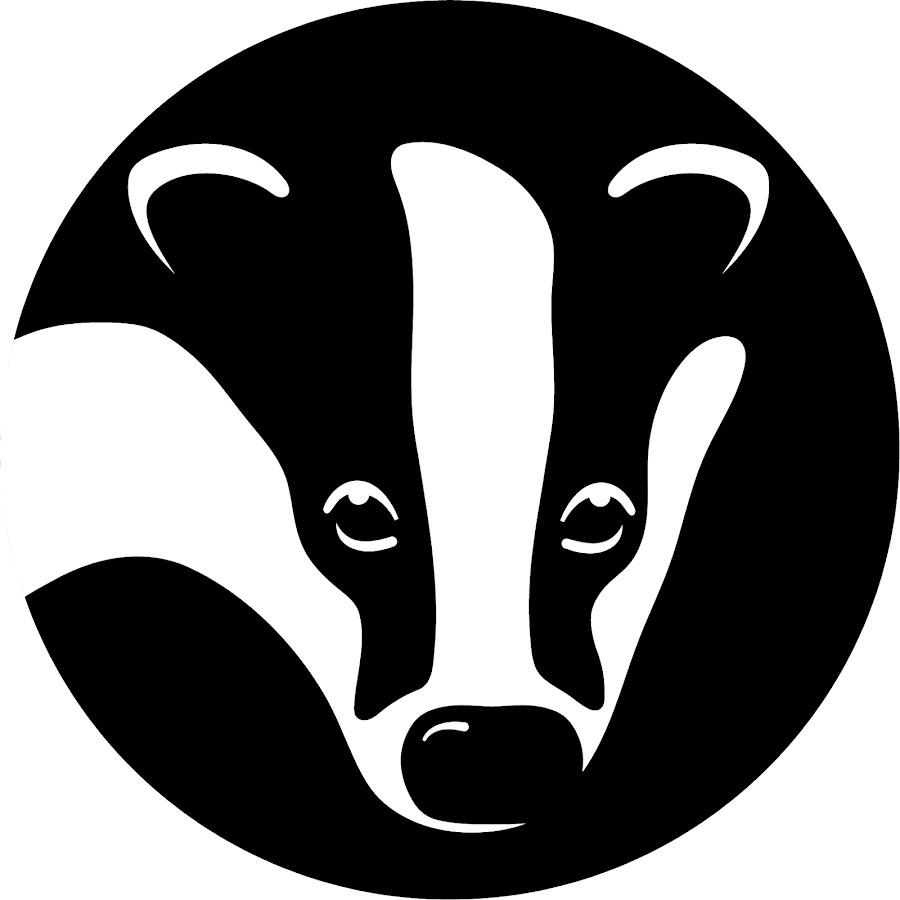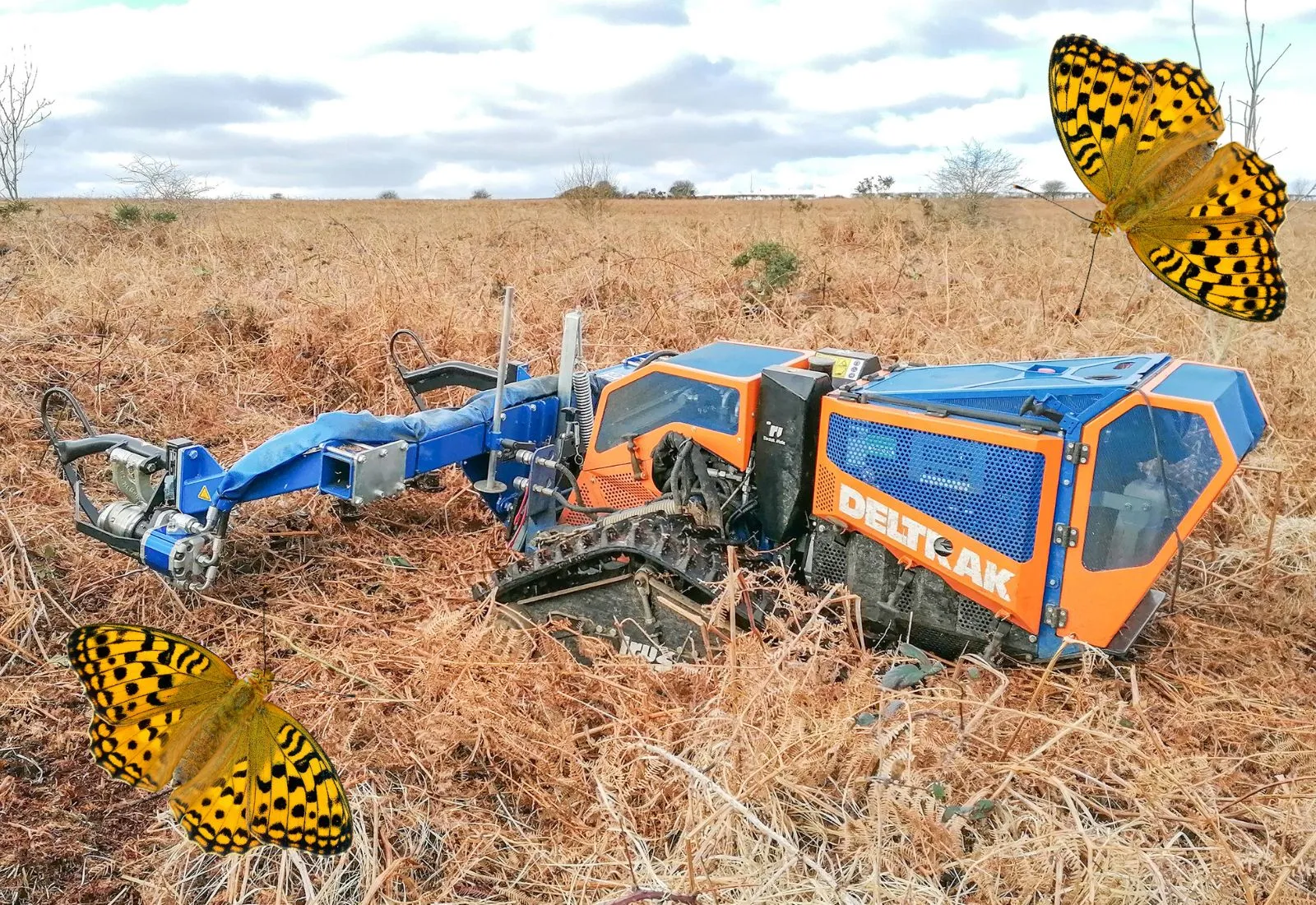6
Conservationists, cattle and a remote-controlled mower are helping to save one of Wales's most endangered animals.Butterfly Conservation has deployed the mooing and mowing machines to protect the beautiful High Brown Fritillary butterfly at the last known site where it is found in Wales.The team have also recruited commoners to graze their cattle at Oldcastle Down in the Vale of Glamorgan for the first time in 60 years, all to create more habitat for the rare and precious species.The project builds on more than 20 years’ work by Butterfly Conservation volunteers who have been steadfastly maintaining the High Brown Fritillary’s habitat at this site since 1997 and without whom the species would probably be extinct in Wales. This summer, those volunteers made the finals of BBC Springwatch's Unsung Hero Awards, honouring their decades of work which is now getting a robotic reboot.Butterfly Conservation Project Officer Dot Williams said: "This is such a fantastic project for Wales. As well as being a beautiful butterfly, the High Brown Fritillary is as icon of what fantastic Welsh conservation can achieve. The funding for this project rewards decades of hard slog by our amazing volunteers, and we can now take the conservation at this site to a whole new level which is really exciting."The amber-coloured High Brown Fritillary used to be widespread across England and Wales but its distribution has declined by a devastating 87 per cent since the 1970s, largely due to destruction of its habitat, development and changes in traditional land management practices. It is now found at just five sites in England and one in Wales.The butterflies need both violets and bracken to survive, but the bracken can quickly outcompete the tiny delicate flowers if not controlled.Local Butterfly Conservation volunteers led by Richard Smith have been maintaining space for violets at Oldcastle Down since 1997 and have had fantastic results: a survey in 1999 found 1.5 butterflies an hour, and by 2019 that had rocketed to 17.4.The charity's Head of Conservation for Wales Alan Sumnall said: "If our key volunteers hadn't been doing this fantastic work, this species would be extinct in Wales." Much of the two decades' work has been painstaking scrub bashing and coppicing - holding back the tide of vegetation that could swamp the tiny violets - and they have increased the area of suitable breeding habitat by two thirds.But now Butterfly Conservation has been awarded £63,000 via the Natur Am Byth! species recovery partnership. This ambitious four-year programme is supported by the National Lottery Heritage Fund, Landfill Disposal Tax Communities Scheme, Natural Resources Wales and other generous funders. The charity has employed dedicated officers Dot Williams and Andrea Rowe to spend four years targeting unprecedented efforts at helping the High Brown Fritillary.The focus of the work is 515 hectares of land centred around Oldcastle Down – common land owned by the Duchy of Lancaster and beloved of local dog walkers and picnickers and an adjoining plot of privately-owned land.Last year the team encouraged members of the local Commoners’ Association to graze their Belted Galloway cattle on the site again for the first time in more than half a century to help maintain the habitat and prevent bracken from becoming too dominant. The six cattle are already breaking up the fast-growing vegetation and creating more light for the tiny violets to grow, and the charity hopes the commoners will bring more animals on site.Butterfly Conservation has also contracted Vale of Glamorgan Council to deploy a remote-controlled robotic mower the size of a quad bike to cut wide pathways through 15 hectares of dense, low-diversity bracken. The mowing, along with coppicing and scrub control, is creating more space for violets but also encourage the cattle to venture into the scrub and start munching from the inside out.The work benefits other species such as adders which will have more space for basking, and Butterfly Conservation is working closely with Amphibian and Reptile Conservation.The project also includes digitally mapping High Brown Fritillary sightings for the first time, which will provide vital data to allow more targeted work.The team are raising awareness by putting fingerpost signs up around the common which they are hoping to upgrade to ‘talking’ fingerposts in due course, and are leading guided wellbeing walks which aim to help locals feel more of a connection to the area's wildlife.However Alan Sumnall warns that the success of the four-year project will rely on local people maintaining the new habitat that is created by the mooers and mowers.He said: "Our big, big concern with this whole project is legacy - what comes after this work. We have fantastic volunteers but many of them have been doing this for years and we need more volunteers to continue their great work. “We also really want to work with more landowners in this area so we can start expanding the High Brown Fritillary habitat further across this whole region. We are appealing for all local landowners who love nature to get in touch so we can secure the future of these beautiful butterflies and many other wonderful species."Find out more about the project and how to get involved at butterfly-conservation.org/in-your-area/welsh-office/natur-am-byth-high-brown-fritillary-vale-of-glamorganTo enquire about volunteering, email Andrea on arowe@butterfly-conservation.org Cominwyr, gwartheg a pheiriannau torri gwair robotig yn ymuno i achub un o rywogaethau prinnaf Cymru Mae cadwraethwyr, gwartheg a pheiriant torri gwair a reolir o bell yn helpu i achub un o anifeiliaid Cymru sydd fwyaf mewn perygl.Mae elusen flaenllaw Cadwraeth Gloÿnnod Byw wedi defnyddio'r peiriannau brefu a thorri gwair i ddiogelu glöyn byw’r fritheg frown ar y safle olaf hysbys lle mae i’w gael yng Nghymru.Mae’r tîm hefyd wedi recriwtio cominwyr i bori eu gwartheg yn Old Castle Down ym Mro Morgannwg am y tro cyntaf ers 60 mlynedd, hyn i gyd er mwyn creu mwy o gynefin i’r rhywogaethau prin a hardd.Mae’r prosiect yn adeiladu ar fwy nag ugain mlynedd o waith gan wirfoddolwyr Cadwraeth Gloÿnnod Byw, sydd wedi bod yn cynnal a chadw cynefin y fritheg frown ar y safle hwn yn ddiwyd ers 1997, ac sy’n gyfrifol yn ôl pob tebyg am atal y rhywogaeth rhag diflannu yng Nghymru. Yr haf hwn, cyrhaeddodd y gwirfoddolwyr hynny rowndiau terfynol Springwatch's Unsung Hero Awards y BBC, gan anrhydeddu degawdau o waith ganddynt, sy’n ailgychwyn bellach ar ffurf robotig.Dywedodd Swyddog Prosiect Cadwraeth Glöynnod Byw Dot Williams: “Mae hwn yn brosiect mor wych i Gymru. Yn ogystal â bod yn löyn byw hardd, mae’r fritheg frown yn eicon o’r hyn y gall cadwraeth wych Cymru ei gyflawni. Mae’r cyllid ar gyfer y prosiect hwn yn gwobrwyo degawdau o waith caled gan ein gwirfoddolwyr anhygoel, a gallwn nawr fynd â’r gadwraeth ar y safle hwn i lefel hollol newydd, sy’n gyffrous iawn."Roedd y fritheg frown, sydd â lliw oren, yn arfer bod yn eang ar draws Cymru a Lloegr, ond mae ei dosbarthiad wedi dirywio 87 y cant ers y 1970au, sef ffigur difethol, yn bennaf oherwydd dinistrio ei gynefin, datblygiadau, a newidiadau mewn arferion traddodiadol o reoli tir.Gellir dod o hyd iddi bellach mewn pum safle yn unig yn Lloegr ac un yng Nghymru.Mae angen fioledau a rhedyn ar y glöynnod byw er mwyn goroesi, ond gall y rhedyn fod yn drech na'r blodau bychain cain os na chânt eu rheoli.Mae gwirfoddolwyr Cadwraeth Glöynnod Byw lleol, dan arweiniad Richard Smith, wedi bod yn cynnal lle ar gyfer fioledau yn Old Castle Down ers 1997 ac wedi cael canlyniadau gwych: canfu 1.5 glöyn byw bob awr mewn arolwg ym 1999, ac erbyn 2019 roedd hynny wedi cynyddu i 17.4.Dywedodd Alan Sumnall, Pennaeth Cadwraeth yr elusen yng Nghymru: "Pe na byddai ein gwirfoddolwyr allweddol wedi bod yn gwneud y gwaith gwych hwn, byddai'r rhywogaeth hon wedi diflannu yng Nghymru." Mae llawer o’r gwaith dros y ddau ddegawd wedi bod yn waith dyrnu prysgwydd a phrysgoedio trylwyr – gan ddal yn ôl y llanw o lystyfiant a allai foddi'r fioledau bychain – ac mae wedi cynyddu’r arwynebedd cynefin bridio addas o ddwy ran o dair.Bellach mae Cadwraeth Glöynnod Byw wedi derbyn £63,000 trwy bartneriaeth adfer rhywogaethau Natur Am Byth. Cefnogir y rhaglen pedair blynedd uchelgeisiol hon gan Gronfa Dreftadaeth y Loteri Genedlaethol, Cynllun Cymunedau y Dreth Gwarediadau Tirlenwi, Cyfoeth Naturiol Cymru, a chyllidwyr hael eraill. Mae'r elusen wedi cyflogi y swyddogion penodedig Dot Williams ac Andrea Rowe i dreulio pedair blynedd yn targedu ymdrechion digynsail i helpu'r fritheg frown.Ffocws y gwaith yw 515 hectar o dir wedi’i ganoli o amgylch Old Castle Down – tir comin sy’n eiddo i Ddugaeth Caerhirfryn ac sy’n annwyl i gerddwyr cŵn a picnicware lleol, a llain gyfagos o dir preifat.Y llynedd, anogodd y tîm aelodau o’r gymdeithas cominwyr leol i bori eu gwartheg Galloway rhesog eto ar y safle, am y tro cyntaf ers mwy na hanner canrif, er mwyn helpu i gynnal y cynefin ac i atal y rhedyn rhag trechu gormod. Mae'r chwe gwartheg eisoes yn torri’r llystyfiant sy’n tyfu’n gyflym ac yn creu mwy o olau i’r fioledau bychain dyfu, ac mae’r elusen yn gobeithio y bydd y cominwyr yn dod â mwy o anifeiliaid i’r safle.Mae Cadwraeth Gloÿnnod Byw hefyd wedi contractio Cyngor Bro Morgannwg i ddefnyddio peiriant torri gwair robotig maint beic cwad a reolir o bell i dorri llwybrau llydan trwy 15 hectar o redyn trwchus heb lawer o amrywiaeth. Mae torri gwair, ynghyd â phrysgoedio a rheoli prysgwydd, yn creu mwy o le i fioledau ond hefyd yn annog y gwartheg i fentro i'r prysgwydd a dechrau pori o'r tu fewn i’r tu allan.Mae’r gwaith yn fuddiol i rywogaethau eraill fel gwiberod, a fydd â mwy o le i dorheulo, ac mae Cadwraeth Glöynnod Byw yn gweithio’n agos gyda Chadwraeth Amffibiaid ac Ymlusgiaid.Mae’r prosiect hefyd yn cynnwys mapio’n ddigidol achosion o weld y fritheg frown am y tro cyntaf, a fydd yn darparu data hanfodol i ganiatáu mwy o waith wedi’i dargedu.Mae’r tîm yn codi ymwybyddiaeth drwy osod arwyddion mynegbyst o amgylch y comin, y maent yn gobeithio eu huwchraddio i fynegbyst ‘siarad’ maes o law, ac maent yn arwain teithiau cerdded llesiant wedi’u tywys, sy’n ceisio helpu pobl leol i deimlo fwy o gysylltiad â bywyd gwyllt yr ardal.Ond mae Alan Sumnall yn ein rhybuddio y bydd llwyddiant y prosiect pedair blynedd yn dibynnu ar bobl leol yn cynnal y cynefin newydd sy'n cael ei greu gan y peiriannau brefu a thorri gwair.Dywedodd: “Ein pryder mawr, mawr gyda’r prosiect cyfan hwn yw etifeddiaeth – beth a ddaw ar ôl y gwaith hwn. Mae gennym wirfoddolwyr gwych ond mae llawer ohonynt wedi bod yn gwneud hyn ers blynyddoedd ac mae angen inni gael mwy o wirfoddolwyr i barhau â'u gwaith gwych. “Rydym hefyd wir eisiau gweithio gyda mwy o dirfeddianwyr yn yr ardal hon fel y gallwn ddechrau ehangu cynefin y fritheg frown ymhellach ar draws y rhanbarth cyfan hwn. Rydym yn apelio ar bob tirfeddiannwr lleol sy’n caru byd natur i gysylltu, fel y gallwn sicrhau dyfodol y glöynnod byw hardd hyn a llawer o rywogaethau gwych eraill."Dysgwch fwy am y prosiect a sut i gymryd rhan yn butterfly-conservation.org/in-your-area/welsh-office/natur-am-byth-high-brown-fritillary-vale-of-glamorganI holi ynglŷn gwirfoddoli, e-bostiwch Andrea ar arowe@butterfly-conservation.org
Conservationists, cattle and a remote-controlled mower are helping to save one of Wales’s most endangered animals.
Butterfly Conservation has deployed the mooing and mowing machines to protect the beautiful High Brown Fritillary butterfly at the last known site where it is found in Wales.
The team have also recruited commoners to graze their cattle at Oldcastle Down in the Vale of Glamorgan for the first time in 60 years, all to create more habitat for the rare and precious species.
You must log in or # to comment.


